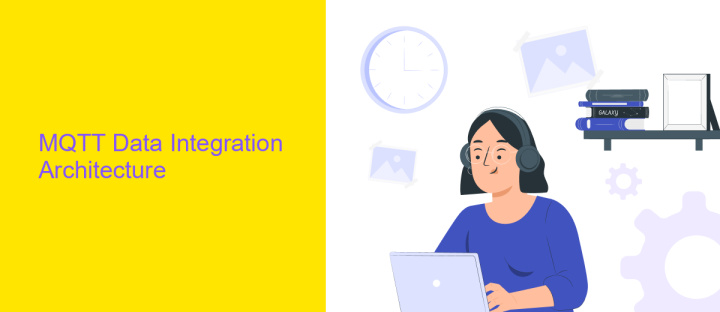MQTT Data Integration
MQTT (Message Queuing Telemetry Transport) is a lightweight messaging protocol designed for small sensors and mobile devices, making it ideal for IoT applications. This article explores the integration of MQTT data, focusing on its efficiency, real-time capabilities, and ease of implementation. By leveraging MQTT, organizations can streamline data communication, enhance system responsiveness, and optimize resource usage in various IoT environments.
Introduction to MQTT
MQTT, which stands for Message Queuing Telemetry Transport, is a lightweight messaging protocol designed for efficient communication in constrained environments. Originally developed by IBM, MQTT has become a popular choice for Internet of Things (IoT) applications due to its low bandwidth requirements and ability to function reliably over unreliable networks. The protocol operates on a publish/subscribe model, making it ideal for scenarios where devices need to exchange data in real-time.
- Lightweight and efficient
- Operates on a publish/subscribe model
- Ideal for IoT applications
- Supports reliable communication over unreliable networks
- Low bandwidth requirements
Due to its simplicity and robustness, MQTT has been widely adopted across various industries, including smart homes, automotive, healthcare, and industrial automation. Its ability to provide seamless data integration between devices and platforms makes it a cornerstone in the modern IoT ecosystem. As more devices become interconnected, the importance of MQTT in facilitating efficient and reliable data exchange continues to grow.
MQTT Data Integration Architecture

MQTT Data Integration Architecture involves the seamless transmission of data between IoT devices and various data processing systems. The architecture typically consists of MQTT brokers, clients, and a network infrastructure that ensures reliable communication. MQTT brokers act as intermediaries, managing connections and facilitating the exchange of messages between publishers and subscribers. Clients, which can be sensors, applications, or other devices, publish data to specific topics on the broker, while subscribers receive data from these topics based on their subscriptions. This decoupled communication model enhances scalability and flexibility, making it suitable for diverse IoT ecosystems.
Integrating MQTT data with other systems can be streamlined using services like ApiX-Drive. ApiX-Drive provides a user-friendly interface for configuring data flows between MQTT brokers and various applications, databases, or cloud services. By automating data synchronization and transformation processes, ApiX-Drive helps to ensure that data from IoT devices is accurately and efficiently integrated into broader data management systems. This reduces the complexity of manual integration efforts and allows organizations to focus on leveraging their data for actionable insights and improved decision-making.
Benefits of Integrating Data with MQTT

Integrating data with MQTT offers numerous advantages that can significantly enhance system performance and reliability. This lightweight messaging protocol is particularly well-suited for IoT and M2M communications, providing a robust framework for real-time data exchange.
- Efficiency: MQTT minimizes bandwidth usage and reduces network traffic, making it ideal for constrained environments.
- Scalability: The protocol supports a vast number of devices and connections, ensuring seamless scalability as your network grows.
- Reliability: With its Quality of Service (QoS) levels, MQTT guarantees message delivery, even in unreliable network conditions.
- Flexibility: MQTT’s publish/subscribe model allows for dynamic and flexible data distribution, accommodating various use cases.
- Low Latency: The protocol ensures minimal delay in data transmission, crucial for time-sensitive applications.
By leveraging MQTT for data integration, organizations can achieve more efficient, scalable, and reliable communication systems. This not only optimizes resource utilization but also enhances the overall performance and responsiveness of connected devices and applications.
Challenges and Considerations

Integrating MQTT data into existing systems presents several challenges and considerations. One of the primary concerns is ensuring data security, as MQTT is often used in IoT environments where sensitive information may be transmitted. Implementing robust encryption and authentication mechanisms is crucial to protect the data from unauthorized access.
Another challenge is managing the scalability of MQTT systems. As the number of connected devices grows, the infrastructure must be able to handle increased data traffic and maintain performance. This requires careful planning and potentially significant investment in hardware and software resources.
- Data Security: Implementing encryption and authentication.
- Scalability: Managing increased data traffic and performance.
- Data Consistency: Ensuring reliable data transmission and reception.
- Interoperability: Integrating MQTT with diverse systems and protocols.
Considering these challenges is essential for the successful integration of MQTT data. By addressing security, scalability, data consistency, and interoperability, organizations can leverage MQTT's benefits while minimizing potential risks and complications.
Conclusion
In conclusion, MQTT data integration offers a robust and efficient solution for real-time data communication, making it an ideal choice for IoT applications. Its lightweight protocol ensures minimal bandwidth usage and low latency, which are crucial for seamless device-to-device interactions. By leveraging MQTT, organizations can achieve reliable and scalable data exchange, enhancing overall system performance and operational efficiency.
For those looking to simplify the integration process, services like ApiX-Drive can be invaluable. ApiX-Drive provides a user-friendly platform that automates data transfer between various applications and systems, reducing the complexity associated with manual configurations. This service can help streamline your MQTT data integration efforts, ensuring a smooth and efficient setup. Ultimately, adopting MQTT along with integration tools like ApiX-Drive can significantly enhance your data management capabilities, leading to more informed decision-making and improved business outcomes.
FAQ
What is MQTT and why is it used in data integration?
How can I integrate MQTT with other data systems?
What are the key benefits of using MQTT for data integration?
Can I automate MQTT data integration tasks?
What security measures should be considered when using MQTT?
Routine tasks take a lot of time from employees? Do they burn out, do not have enough working day for the main duties and important things? Do you understand that the only way out of this situation in modern realities is automation? Try Apix-Drive for free and make sure that the online connector in 5 minutes of setting up integration will remove a significant part of the routine from your life and free up time for you and your employees.

